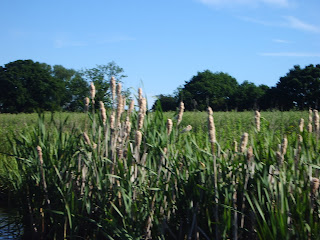I recently was able to assist in planning and booking ten days of activities for a grandma and grandpa traveling with their two granchildren, a boy aged 10 and a girl aged 7, to Breckenridge from the United Kingdom. The children were really kept busy and were able to experience a great deal that Summit County has to offer in the way of summer activities. I thought it was worth sharing their itinerary of adventures.
The first couple of days were spent adjusting from jet lag and also to the altitude. Then it was on to rafting with a float trip on the Colorado River http://bit.ly/nWCSjL. The half day trip is perfect for multiple ages and is one of the raft trips that will take children as young as three if they weigh at least 35 pounds. Although both children would have qualified in age for a whitewater rafting trip, as an introduction to rafting this is a great starter trip. The drive to the Kremmling Outpost is about an hour from Breckenridge. The raft company supplies wet suits if you want them, a splash jacket, and an experienced guide. For the adventurous who would like to cool off, there is a jump into the Colorado River from a cliff above the water, and sometimes trips stop at a small natural hot spring on the side of the river.
The next day the group headed to Frisco, picked up bikes, and rode a shuttle to the top of Vail Pass http://bit.ly/r1fZ5I. My husband met them at the pass after having ridden up from Frisco and rode with them to the Village at Copper Mountain for ice cream. I joined the group in Copper and rode with them to Frisco and the bike shop, while my husband descended at a faster pace. The only difficulty that we had was that the little girl was between bike sizes and was really on a bike that was a bit too small (the next size up was too large) with only six gears, and so her little legs underwent quite a work out.
The next activity was to ride the Georgetown Loop http://bit.ly/qUXtbR. This is another really appropriate intergenerational outing and will thrill all ages. You have the option on the train ride to stop halfway down the mountain at the Colorado Historical Society's Lebanon silver mine. The group did not choose to do this as they had already visited a gold mine and were actually on their way down to Denver to stay with friends for the night and then go to Water World for the day.
A trip to Summit County with your grandparents would not be complete without a little shopping trip to the Silverthorne Outlets http://bit.ly/1bvdQo. Although these children would not need Back To School items as all school children in the United Kingdom wear uniforms, the sales for that time of year, meant a couple of fun outfits for each of them were not so expensive.
A lot to accomplish in ten days. I was impressed with the children's willingness to try everything and their interest in all of the activities that they undertook. I am sure that this is a trip that they will remember for a long time, and as they grow older will come to understand what a wonderful gift their grandparents gave them. They will be back to ski in March with mom, dad and little sister to experience the other wonderful season of this area. I forsee maybe a Dog Sledding activity http://bit.ly/h69aeJ or maybe a Sleigh Ride http://bit.ly/f4CynU if they can be dragged away from the ski slopes.
Consider bringing your grandchildren for this kind of experience in the Rocky Mountains and I would love to help you arrange unforgettable memories for your family. It was a gift to me too, in that I knew the family and was able to share in some of the children's joy in their surroundings.
 |
| Grandma & Grandpa Martineau, with Tabitha and Luke, High Country Activities owner, Jane Shafroth and canine companions Sawyer and Huckleberry |












 .
.











































